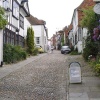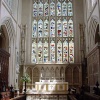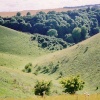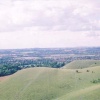Please login or click here to join.
Forgot Password? Click Here to reset pasword
 |  |  |  |  |  |
Robert E. Speicher Posts: 12 Joined: 17th Sep 2013 Location: USA | quotePosted at 17:45 on 27th September 2013 I am an outdoor photographer. I seriously started back around 1984 and was using film cameras, Minolta 202. I have a 35-70 and 70-210 zoom lenses. I have tried using a digital camera and my results don't come close to slide film. Today, I find it hard to accept that the slide films I used are no longer produced. One thought I have as to why I don't prefer digital is all of the "extra" gear a person needs to "finish" with a particular shot. I like to see my slides and look for where I could have done better. Digital requires a computer, photo programs that will let a person "enhance" or "add" to a photo. So many pictures on this site are absolutely beautiful, I look at the kind of lenses used, at what speed, etc. Then I think, did the person enhance this photo......is the light actually that way? My idea of taking a good photo is to treat each and every "slide" as a blank canvas. I wait for the right light, compose from several angles and when I feel the "canvas" is ready I push the release. I haven't done any real picture taking for about 15 years. I miss going out looking for pictures in the spring and fall, with some activity in the winter. I don't know if many people still use slide film. If there are any people here who still use slide, I would like to hear from them. |
| Edward Lever Posts: 734 Joined: 22nd Dec 2005 Location: UK | quotePosted at 08:30 on 28th September 2013 to Robert, I was saddened to read that you no longer do much picture taking because of the demise of slide film, although Fujichrome is still available through Amazon and other stockists, even though Fuji has recently stopped manufacture. Going back to the days before digital, I used slide film most of the time, and also made my own Cibachrome (now Ilfochrome) prints. The results seemed impressive at the time, but the two problems I struggled with were the build-up of contrast and dust specks. Using my own improvised darkroom, I experimented with contrast reduction masks to give a better result, but this was a very time-consuming process. The Cibachrome paper and the developing chemicals were also very expensive. When digital film scanners became available, I experimented with the conversion of some of my slides to digital. This opened up the new possibilities of digital removal of scratches, dust specks and digital contrast control. I continued to use slide film in this way until about four years ago, when I succumbed to temptation and bought a second-hand DSLR. I confess I was impressed by the image quality, and used slide film less and less after that. The only situation in which slide film still excels is when it is used with a projector. I have not yet seen a digital projector which gives as good an image as a slide-film projector. I would say that my experience with slide film has influenced my thinking as a digital photographer. I still try to 'get it right first time' to minimise any digital manipulation afterwards, although I shoot in RAW to enable me to rescue some shots that were misjudged at the time of taking. It is not necessary to use Photoshop etc if you adopt the same approach to digital photography as you did for slide film. It is also possible to buy a used semi-professional DSLR for a few hundred pounds (I now use a second-hand Canon EOS 5D, which originally sold for over £2000 and can now be bought for around £400 used), which will give results as good or better than slide film in most cases. |
Robert E. Speicher Posts: 12 Joined: 17th Sep 2013 Location: USA | quotePosted at 14:57 on 28th September 2013 Hello Edward; Thank you for your response. I know Fugi is still available and it is very good film. What I miss is which brand I used for what result I wanted. I used Kodak 64 for fall and Fugi for spring. Kodak tended to like reds and yellows, Fugi likes greens and blues. I liked to go to Agfa when I wanted to have softer colors. Writing this makes me think I was using a form of enhancement. I want to get back into taking photos, and I guess I have to move with the times. There is some confusion as to what focal length to use with a digital SLR. I want to use the same two zooms I've used in the past. I have to accept that auto-focus is here to stay and that focal length use is different. I am looking at two brands of cameras and I want the brand that makes the best "glass" for lenses. Canon or Nikon are my picks. Back in the old days I noticed that Canon made a better glass with a close tie with Nikon. But then "glass" doesn't really make a difference today what with the "programed" image capture that will sharpen any little "hic-up". |
| Edward Lever Posts: 734 Joined: 22nd Dec 2005 Location: UK | quotePosted at 17:06 on 28th September 2013 Hi Robert, the question about lenses and digital SLRs all comes down to what size sensor the camera has. The majority of DSLRs have a sensor which is smaller in area than the equivalent 35mm film camera (the standard 35mm film frame size is 24 mm X 36 mm). Therefore most digital sensors will crop the image area, making it seem as though the lens has a longer focal length than stated (this is not really a longer focal length, it is just that the image circle is cropped by the sensor). There are however, a number of DSLRs with full-frame sensors, and for these, the focal length of the lens is exactly equivalent to film use. There is a good explanation of sensor sizes on Wikipedia Personally I am a Canon fan, but the other main manufacturers are equally good. The choice of 'Glass' is just as important for digital as film, and is becoming even more so as the sensor resolution increases year on year. Your wish to use your old zooms might be limited by electronic compatibilty. Unfortunately, not all old lenses are compatible with digital cameras, particularly those lenses made by third party lens manufacturers. I know all the Canon EF (Electro Focus) lenses will work equally well on the Canon EF Film SLRs and Canon DSLRs. See Wikipedia article on this. If your lenses are pre EF, then they won't work on Canon DSLRs. You do not need to use the internal camera settings for image processing, and in my experience these do not necessarily improve the image. Most DSLRs allow you to capture the 'RAW' image data and then process this externally on the computer, in an analogous way to processing and printing in the darkroom. This gives you the freedom for greater or lesser sharpening and control of other image parameters. Canon provide a very good free software package called Digital Photo Professional with their DSLRs, which allows considerable control of the RAW image data to produce what final effect you want. There is a lot of information out there on the web, I suggest you browse on the topic and decide whether you want to 'go digital'. Unfortunately, as film is becoming very difficult to find these days, and it is also difficult to find a good lab to process it, you may have no option but to switch. |
| Rod Burkey Posts: 554 Joined: 2nd Sep 2008 Location: UK | quotePosted at 00:01 on 5th October 2013 I used to really like Fuji Velvia, and prior to that Kodachrome 25, which came into its own on trips to the Greek Islands. Waiting for the processed slides to plop through the letterbox was a tense time of hope that the exposures were spot on. Then I started to process my own slides too, which saved time but just added to the workload on my makeshift darkroom. Good days indeed, but time has moved on for me and those days of taking an age to produce Cibachrome prints is not really missed as my rate of failure was high. But, I do miss Velvia. Your post Robert is very interesting. Thank you. |
| Dave John Posts: 22335 Joined: 27th Feb 2011 Location: England | quotePosted at 21:44 on 5th October 2013 I tended to use a lot of Ektachrome although had some Kodachrome in the fridge as a lot of magazines back then would only accept Kodachrome. However I never got into Cibachrome although i have seen some excellent prints from slides on it. As Edward indicated earlier exposing with digital takes pretty much the same parameters as for slide file. With slide film you always exposed for the highlights and let the shadows go their own way and with digital you also expose for the highlights although they call it 'exposing to the right' as the highlights are on the right hand side of the histogram. The only difference being that with software you can recover detail back into the shadows which you could not do with slide film. Once you had pressed the button that was it!! Edward also mentions Canons DPP software which is ecxellent and gives an amazing amount of control for a free programme. As to glassware I have an adaptor that allows me to use my old 'FD' lenses on my 500d although exposure has to be manual but that is very easy now as you can make adjustments by looking at the screen on the camera. And again I have to agree with Edward, although not got there yet, if you have the choice of full frame or crop frame take the full frame every time. You won't regret it, the reproduction quality is there, especially if you are rinting over A4 or croppin g quite tightly into you original frame. And I will also agree with Rod, this is an interesting thread and could roll on a way yet |
Robert E. Speicher Posts: 12 Joined: 17th Sep 2013 Location: USA | quotePosted at 03:34 on 6th October 2013 Hi Dave; I guess I am just stuck in a time using slide film. When the slides are returned from processing the results are right there. The digital camera will take a "raw?" picture , but the camera will have the ability to "touch" up the photo..... I worked with a guy, back in the early 70's who used a Nikon, top of the line, with a motor-drive. He showed me some photos that he "saved" out of a roll of 200 frames. There were about four or five. I couldn't believe that he would just hold the release down and automatically shoot 200 "shots." I remember when "auto-focus" became the new way, right after that the camera's ability to "know" where your eye was looking inside the camera. Technology was taking away the "fun" of seeing your shot. I have a Kodak digital camera, a "point and shoot" with the wide angle and telephoto. The funny part is it has a "viewer" to look into, with the "screen" on the back....I've tried to use the viewer but the camera is too tiny for my hands. Using the screen I have the problem of "shake" or "tremble." My old Minolta is heavy and solid and I like the steadiness of it. I have two Kodak "620" roll film cameras and I can get slide film for them. But 6x9 slides are kind of too much. Photography has turned into a tech kind of hobby, and just going out with a camera filled with film and learn to take good photos by trial and error is gone. Today getting good photos can be gotten with programs, the mind of the photo taker is just holding the camera. |
| Edward Lever Posts: 734 Joined: 22nd Dec 2005 Location: UK | quotePosted at 21:48 on 7th October 2013 On 6th October 2013 03:34, Robert E. Speicher wrote:
In my experience, when my slides returned from the processing lab, many of them were spoiled by exposure errors. The highlights might have been burned out on one, or the shadows underexposed on another. I soon learned the lesson that the eye perceives a far greater range of light intensity than any film emulsion is capable of. Eventually, I found that the most reliable method of exposure for slide film was the 'incident light method' using a Weston Meter with an Invercone The same limitations of exposure apply to digital sensors. My knowledge of metering gained with film has influenced my approach to exposure control in digital photography. For 'difficult' scenes, the incident light approach will still give optimum results, although it might seem eccentric to continue to use a Weston Meter when modern digital metering systems are so good. I can tell that Robert is hankering after the 'good old days' and this approach can still be done with a digital camera, provided it is set to 'Manual', both for focus and exposure. There are some excellent older DSLRs which would be suitable for someone wanting to work like this. Examples I can think of are the Canon 10D, 20D, 30D. I am only quoting Canon because I am familiar with these cameras, and the other big makers must have similar models. Cameras of this vintage can be picked up very cheaply now second-hand, since they do not offer the modern 'must-haves' such as movie mode or live view, but are very suitable for the thinking photographer. |
| Dave John Posts: 22335 Joined: 27th Feb 2011 Location: England | quotePosted at 21:55 on 7th October 2013 I fully agree Edward, modern 'in camera' meters may be very good but a handheld meter and manual settings give much more scope and control and you learn more about light and camera settings too. I still have my Weston Euro-master which was bought more or less as soon as they came out, early 70's?? probably needs a good service and new cell by now, but it was always very reliable. Manual makes you think more and slows down the picture taking process. Must get back into the habit of it again... |
| Edward Lever Posts: 734 Joined: 22nd Dec 2005 Location: UK | quotePosted at 22:49 on 7th October 2013 On 7th October 2013 21:55, Dave John wrote:
Yes Dave, we seem to be on a similar photographic journey. My experience with film has definitely influenced how I think about digital. Perhaps this is why that even now, photography students must start out using a manual film SLR. Auto-everything saves on thinking, but is not a good way to learn. |